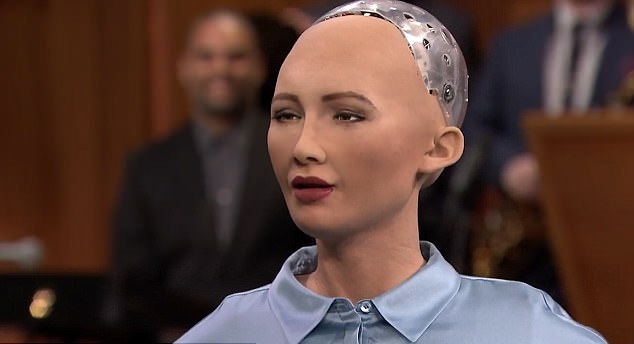Sophia is the creation of robotics expert David Hanson, who believes that artificial life forms can foster better connections with people if they take on a human form. According to Daily mail
Coined by Japanese professor of robotics Masahiro Mori, it refers to the point at which a robot looks almost realistic enough to pass for a human, but retain enough artificiality to make people uncomfortable.
Dr Hanson modelled Sophia after Audrey Hepburn and his wife and is intended to embody classic beauty, the company says.
She has fine porcelain skin, a slender nose, high cheekbones, an intriguing smile and deeply expressive eyes.
The robot’s skin is made from a malleable material called Frubber, an elastic form of rubber, with multiple motors hidden beneath it.
Sophia is able to make numerous natural-looking facial expressions, including blinking and smiling.
She is also capable of understanding speech and remembering interactions, including faces, so she gets smarter over time.
The android uses cameras in her eyes to see and a computer algorithm in her ‘brain’ is able to recognise faces and make eye contact.
Dr Hanson wants to use robots to forge connections with socially isolated people like the elderly.
The robot was designed to work in healthcare, education or a customer service role, helping people interact with the outside world.
He has created about 20 robots and believes that artificial lifeforms can foster better connections with people if they take on a human form.
And while the achievements are impressive, they have not quite managed to overcome this discomfort factor.
But Sophia’s creator is confident that this will eventually happen.
Dr Hanson said: ‘I do believe there will come a time when robots are indistinguishable from humans.
‘Twenty years from now human-like robots will walk among us; they will help us, play with us, teach us, and help us put groceries away.
‘I think AI will evolve to a point where they will truly be our friends.’
N.H.Kh

